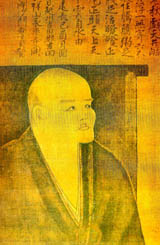
I gave a lecture on couple relations in Osaka. I talked about orthodox Dreikursian theory and method. The following story is not the topic in the lecture.
When a man and a woman get married, they begin to write their own history by their behavior in everyday life. The description of their history is over when the both of the couple died. Just like fitting a picture into a frame, the history of the couple is fitted into the long history of families from the ancestors to the descendants; the history of the families is fitted into the history of a nation; the history of the nation is fitted into the history of the human beings.
We can regard that the history of the human beings is made from the histories of couples, because, when we consider a family line, of which the human race consists, a couple should be the minimum element, not an individual. However, Adler thought about social relations from the spatial viewpoint starting from an individual.
This social feeling remains throughout life, changed, colored, circumscribed in some cases, enlarged and broadened in others, until it touches not only the members of his immediate family, but also his extended family, his nation, and finally, the whole humanity. [1]
Here he obviously focused on the spatial aspect of human life. He was talking about a socially embedded individual. Karl Marx, whom he referred to, was standing on the same position. Marx discussed about alienation from a spatial viewpoint; i.e., the alienation from the present society, not from the historical lineage. This spatial view of humanity may relate to the idea of individualism of the Western culture.
I remember a film which John Newbauer showed me at his workshop on spirituality in ICASSI 2007. First we see a house. The scene was zoomed out and the house was shrinking smaller and smaller, and we see a town, a country, a continent, the Earth, the solar system, and, at last, the Galaxy. Then the scene zoomed in and, at last, we see a molecule and an atom. The film was amazing, but I did not feel it to be spiritual. To Buddhist, spirituality is something temporal or historical, because the law of causation, pratítya-samutpâda in Sanskrit or engi in Japanese, is the core of the philosophy.
The human beings are social beings on the one hand, and historical beings on the other hand. A married couple is the best start line to think about the historical aspect of human beings. Social Interest also should be considered from the temporal viewpoint. We are not only socially embedded, but also historically embedded. When each couple lives everyday life being conscious of the connection with their historical families, their historical nation and their historical world, then they will have historical Social Interest.

Dogen (1200-1253), a Zen master, said:
Zen Master Enchi Dai-an of Chikei-in temple in Fukushu, says in formal preaching to the assembly in the Dharma Hall:
“Dai-an lived on Isan mountains for thirty years,
Eating Isan meals,
Shitting Isan Shit,
Not learning Isan Zen,
Just watching over a castrated water buffalo.
When it strayed into the grass, I dragged it out.
When it invaded another’s seed patch, I whipped it.
Though disciplined for a long time already,
As a pitiful creature, it suffered people’s remarks.
Now it has turned into a white ox on open ground.
It is always before me.
All day long it is in a state of conspicuous brightness.
Even if driven away, it does not leave.”We should clearly receive and retain this preaching. Thirty year of effort in an order of Buddhist patriarchs are eating meals, with no miscellaneous worries at all. [2]
He talks about a sacred daily life, in which every behavior is understood as historical necessity. There, not prayer, nor rituals, but eating meals, usual daily life, is important. When we eat meals with the awakening to the relationship between the eternal flow of the history and the present happening, then our life is sacred. This is the sense of historical embeddedness, or the temporal aspect of Social Interest.
[1] Alfred Adler: “Understanding Human Nature“, translated by Colin Brett. Hazelden, Center City, Minnesota, 1998 (original 1927), p.35.
[2] Dogen: “Shobogenzo“, translated by Gudo Nishijima and Chodo Cross. Windbell, London, 1996, Book 3, p.225.

